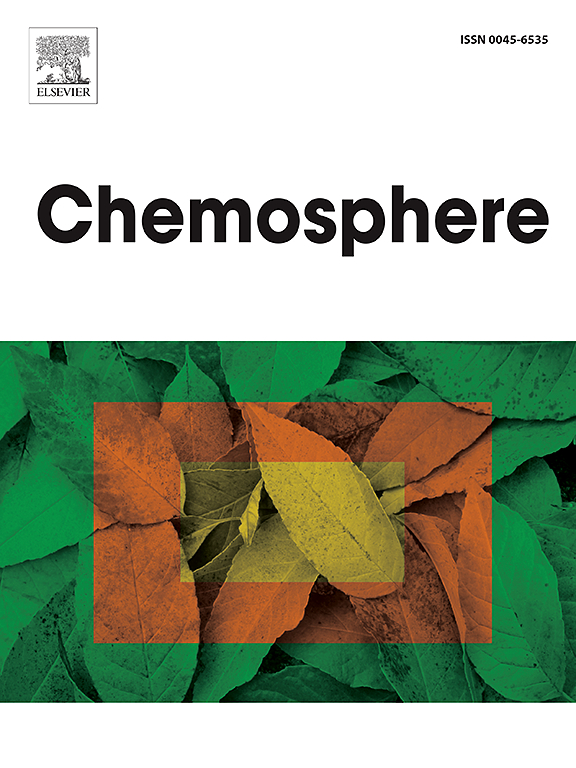利用外来入侵植物源生物炭和刺荨麻粉修复重金属污染土壤
IF 8.1
2区 环境科学与生态学
Q1 ENVIRONMENTAL SCIENCES
引用次数: 0
摘要
外来入侵植物威胁着全球生态系统的完整性。消灭IAPS是昂贵的,它们的生物量被认为是废物。从IAPS生物质中生产生物炭可以将废物转化为资源。同时,该材料可用于修复污染土壤。此外,利用广泛分布的原生杂草,如荨麻(U)作为额外的改良剂,可以进一步改善土壤修复。在植物修复试验中,以菜豆(Phaseolus vulgaris L.)为指示植物,将分布广泛的两种IAPS生物量Ailanthus altissima (BA)和Solidago gigantea Aiton (BS)生产的生物炭分别以2%和5% w/w的比例与Urtica dioica L.粉末(U) (2% w/w)混合施用于砷(As)和铅(Pb)污染的土壤中。测定了该改良剂对土壤孔隙水(SPW)特性、植物和细根发育以及土壤酶活性的影响。单独添加BS和BA与U联合添加时,SPW的pH和电导率(EC)升高,[Pb]降低,促进了植物的生长,降低了植物对Pb的吸收。生物炭与U的组合增加了土壤的酶活性、细根长、生物量和比根长。最后,两种含U的生物炭都增加了SPW中As的移动性,导致根系对As的吸收增加,尽管没有向地上器官转运。我们的发现有助于开发具有成本效益和环境可持续性的方法来管理污染土壤。与此同时,他们解决了IAPS的问题,这可以在未来为政策制定者提供指导。本文章由计算机程序翻译,如有差异,请以英文原文为准。

Remediating heavy metal-contaminated soil through invasive alien plant-derived biochar and stinging nettle powder
Invasive alien plant species (IAPS) threaten ecosystem integrity worldwide. IAPS eradication is expensive, and their biomass is considered waste. Producing biochar from IAPS biomasses could turn waste into a resource. At the same time, this material could be used to remediate polluted soils. Also, using widespread native weeds, such as Urtica dioica (U), as an additional amendment could further improve soil remediation. In a phytoremediation experiment, we applied biochar produced from two widespread IAPS’ biomass, i.e. Ailanthus altissima (Mill.) (BA) and Solidago gigantea Aiton (BS), at different rates (2 % and 5 % w/w) together with Urtica dioica L. powder (U) (2 % w/w) in an Arsenic (As) and Lead (Pb)-contaminated soil, using Phaseolus vulgaris L. as an indicator plant species. We measured the amendment's effects on soil pore water (SPW) properties, plant and fine root development, and soil enzymatic activities. When BS was added alone, and when BA was combined with U SPW's pH and electrical conductivity (EC) increased and [Pb] diminished, which augmented plant growth and reduced Pb uptake. Combining the biochar types and U increased the soil's enzymatic activities, fine root length, biomass, and specific root length. Finally, both biochar types with U increased As mobility in SPW, leading to higher plant uptake in roots, although without translocation to aboveground organs. Our findings contribute to developing cost-effective and environmentally sustainable practices for managing polluted soil. Simultaneously, they tackle the problem of IAPS, which can be used in the future to provide guidelines for policymakers.
求助全文
通过发布文献求助,成功后即可免费获取论文全文。
去求助
来源期刊

Chemosphere
环境科学-环境科学
CiteScore
15.80
自引率
8.00%
发文量
4975
审稿时长
3.4 months
期刊介绍:
Chemosphere, being an international multidisciplinary journal, is dedicated to publishing original communications and review articles on chemicals in the environment. The scope covers a wide range of topics, including the identification, quantification, behavior, fate, toxicology, treatment, and remediation of chemicals in the bio-, hydro-, litho-, and atmosphere, ensuring the broad dissemination of research in this field.
 求助内容:
求助内容: 应助结果提醒方式:
应助结果提醒方式:


